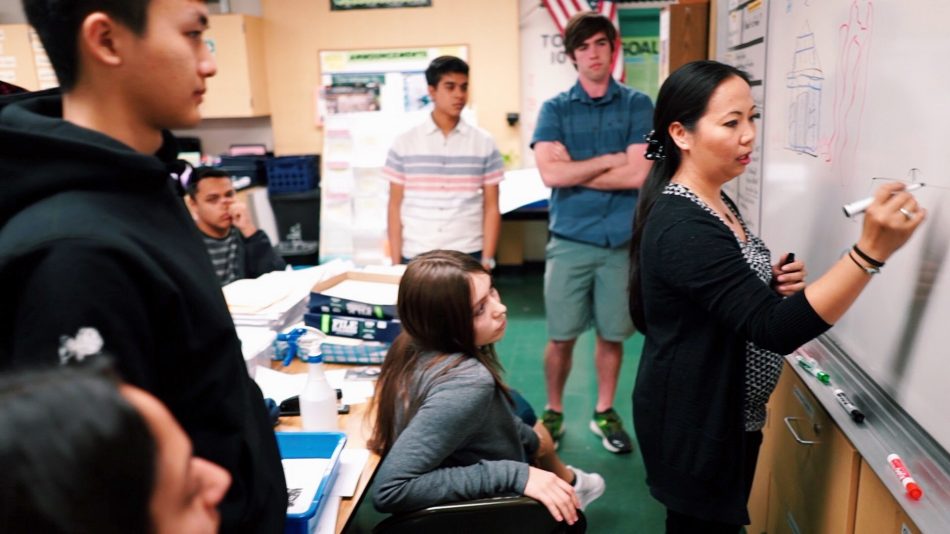I’m a physics teacher because I want to encourage my students to be the next generation of scientists and innovators – people like Marie Curie, Lise Meitner, Fabiola Gianotti, Albert Einstein, or Stephen Hawking. I’d also love for any of them to choose a career in teaching –there is a critical shortage of highly qualified physics teachers in our country that really needs to be addressed.
I decided to apply for the Samsung Solve for Tomorrow competition on behalf of my students because it is a perfect way to engage them. I am a big fan of problem-based learning, and that method is encouraged by programs like this. My students have been challenged by Samsung to apply the theoretical concepts they learn from my physics classes towards solving real-life problems in order to make a difference in their own communities. This is what authentic, deep-level education is.
Working with the students and seeing how much they have changed throughout the process to make our project a success is truly inspiring as a teacher. I feel very honored to be by their side. Their perseverance and resilience throughout the development of our app-based fire suppression system is remarkable. They weren’t afraid to teach themselves new skills like coding, dive into electronics, or use various sensors to gather data. The students’ teams (Design, Prototype, Coding, and Marketing) communicated and collaborated very well with each other. They all had the grit to keep going despite the odds they had stacked against them from our current lack of necessary resources such as equipment and tools.
So when we learned that we were one of the top 10 national finalist teams, won $50,000 of technology for our school and now have the chance to compete for the grand prize, we were ecstatic!
Throughout this project I’ve been thinking about what the famous education researcher Andreas Schleicher once said: “Schools have to prepare students for jobs that have not yet been created, technologies that have not yet been invented, and problems that we don’t know will arise.” There certainly is a disconnect between the skills that our students are learning in schools, and the skills that they need for employment. The way we conquer this is through initiatives like Solve for Tomorrow, designed by companies like Samsung.
I’m so grateful to Samsung because they’ve chosen to support classrooms like ours so that we can have state-of-the-art technology equipment like Chromebooks, monitors, televisions and more. How can students apply what they’ve learned and not just regurgitate facts if they don’t have the technology to create their projects? We need more people and companies to do this.
Samsung’s Solve for Tomorrow contest has also challenged me to look into my own classroom practices and reflect on what I can change and do to support my students’ innovative thinking and passion for science, technology, engineering, arts and math (STEAM). I always want my approach as a teacher to be growing and evolving.
Thank you so much, Samsung. You all have made learning much more meaningful through this initiative. Solve for Tomorrow opens the doors of opportunity for my students, and I can’t wait to see who they become.
To find out more about 2018 Samsung Solve for Tomorrow national finalist teams, please visit smsng.news/SFT2018Top10.
About the contributor:
Dolly Bergen has been a physics teacher for the past 21 years and is originally from the Philippines. She graduated cum laude with a degree in secondary education from Philippine Normal University and came to the U.S. to teach physics in 2002. She accepted a position at Santiago High School in Corona, California in 2005 and has been challenging students there ever since.



